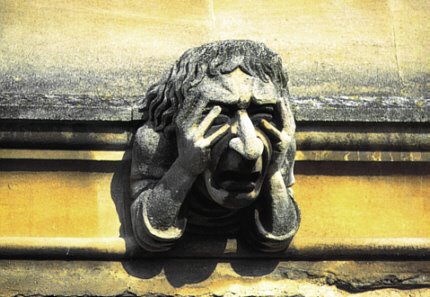‘Manuscript Identities and the Transmission of Texts in the English Renaissance’
 University of Sheffield, 25-26 May 2012
University of Sheffield, 25-26 May 2012Panel 1: ‘Medieval texts in renaissance contexts’
Kate McLean (York University): ‘“Reed in bookes olde and wysse”: medieval romance in a renaissance manuscript context’
Carrie Griffin (Queen Mary London): ‘John Russell’s Boke of Nurture: the afterlife of a medieval “practical” verse text’
Jeremy Smith (Glasgow University): ‘Textual afterlives: the recuperation of medieval texts in early modern Scotland’
Panel 2: ‘The social network: Protestant letter networks in the reign of Mary I’
Sebastian Ahnert (King’s College, Cambridge), ‘Network analysis and its applications’
Ruth Ahnert (Queen Mary London): ‘Protestant letter networks in the reign of Mary I’
Thomas Freeman (Essex University): ‘Contextualizing the letters of the Marian martyrs’
Panel 3: ‘Compilation and transmission’
Estelle Stubbs (Sheffield University): ‘Scribal identification and the transmission of texts’
Julia Boffey (Queen Mary London): ‘Fabyan’s Chronicle: compilation and transmission’
Jessica Edmondes (Sheffield University): ‘Poetic exchanges and textual interplay in BL Harl. MS 7392 (2)’
Panel 4: ‘Coteries and identities in sixteenth-century Scotland’
Elizabeth Elliot (Edinburgh University): ‘“The Bannatyne Manuscript” and the construction of familial identity’
Sebastiaan Verweij (Lincoln College, Oxford): ‘Manuscript production and circulation at the court of James VI’
Theo van Heijnsbergen (Glasgow University): ‘The textual community of James VI’
Panel 5: ‘Approaches to manuscript texts’
Steven May (Sheffield University): ‘Textual criticism and scribal culture’
Sylvia Adamson (Sheffield University): ‘The code as context: or why renaissance text editors should go to HEL’
Richard Serjeantson (Trinity College, Cambridge): ‘Scribal publication and textual transmission in the early seventeenth century’
Panel 6: ‘Elizabeth I and her secretaries’
Carlo Bajetta (Université de la Vallée d’Aoste): ‘Who did what?: penning and copying Queen Elizabeth I’s letters in Italian’
Guillaume Coatalen (University of Cergy-Pontoise): ‘Who did what?: penning and copying Queen Elizabeth I’s letters in French’
Angela Andreani (University of Milan): ‘Letters about letters: the in-house correspondence of the Elizabethan secretariat’
Panel 7: ‘Forms of publication: manuscript and print’
Steven Veerapen (Strathclyde University): ‘Punishing poisonous pens: the role of the renaissance law courts in preventing, regulating and punishing slanderous manuscripts’
Sophie Butler (New College, Oxford): ‘“Yett for all this knowe I hold this but as a Paradoxe”: authorial identities in the scribal and printed circulation of Sir William Cornwallis the younger’s Encomium of Richard III’
Tom Charlton (Stirling University): ‘“One sma glasse of sacke”: The “Reliquiae Baxterianae”, manuscript, print and Baxter’s reputation’
Panel 8: ‘Circulation and community’
Hannah Crummé (King’s College and University College London): ‘“Deffensa de la Poesia”: manuscript exchange between the Sidney circle and Spain’
Austen Saunders (Wolfson College, Cambridge): ‘Manuscript additions to a copy of Otto van Veen’s Amorum emblemata and their circulation’
Arthur Marotti (Wayne State University): ‘Rare manuscript poetry and the sociology of literary transmission in early modern England’
Panel 9: ‘Translation and adaptation’
Edward Smith (Sheffield University): ‘Rivals in Rime: Petrach, Wyatt, and the Haringtons in BL, Add. MS 36529’
Melanie Evans (Birmingham University): ‘Scholarly ambitions: the atypical style of Princess Elizabeth’s translations’
Faith Acker (St Andrews University): ‘“Though the Butler’s dead, the keyes are left behind”: adapting and adopting poetical memories of the butlers of Christ Church, Oxford’
Panel 10: ‘Political and religious identities’
Helen Graham-Matheson (Queen Mary London): ‘“Remember me when you do pray”: the Hever Hours as a representation of English aristocratic identity’
Fred Schurink (Northumbria University): ‘John Osborne’s manuscript translations of Demosthenes and Aeschines (1582-3) and the Elizabethan House of Commons’
Helen Draper (Institute of Historical Research, University of London): ‘Samuel Woodforde’s gift’
Panel 11: ‘Making manuscripts’
Henry Woudhuysen (University College London): ‘Paper books and letter books, manuscripts and vade mecums: Gabriel Harvey and places for writing’
Sajed Chowdhury (Sussex University): ‘Makes her soule and body one’: the metaphysics of ‘making’ in the verse miscellany of Constance Aston Fowler (c. 1630-1660)’
Claire Williams (Sheffield University): ‘“This and the rest Maisters we all may mende”. Collection preoccupations, social and self-awareness in National Art Library MS Dyce 44’
Panel 12: ‘Selection and reception in the seventeenth century’
Mary Morrissey (Reading University): ‘Sermon notes: what they are and what they were for’
Angus Vine (Stirling University): ‘Search and retrieval in seventeenth-century manuscripts: the case of Joseph Hall’s meticulous miscellany’
Simon Moore (Newcastle University): ‘The miscellany of Sir John Pye (MS Osborn b. 52) and nonconformist identity 1640-1689’
Panel 13: ‘Making and reading miscellanies’
Elizabeth Evenden (Brunel University): ‘Selectivity and survival: Matthew Parker and the role of the codex in early modern England’
James Daybell (Plymouth University): ‘The reading and reception of scribally copied letters in early modern England’
Michelle O’Callaghan (Reading University): ‘Collections and coteries: reading verse miscellanies’
Panel 14: ‘Royalists in Manuscript’
Marcus Nevitt (Sheffield University): Out of the Closet by Hand: Thomas Killigrew's Revisions to his Comedies and Tragedies (1664)’
Andrew King (University College Cork): ‘The monument of uncertainty: funereal imaginings in Samuel Sheppard’s “The Faerie King”, Bodleian Library MS Rawl. Poet. 28’
James Loxley (Edinburgh University): ‘Torn halves: John Cleveland in print and manuscript’
Panel 15: ‘Provenance research in manuscript studies’
Alice Eardley (Reading University): ‘Antisocial authorship and the persistent non-advent of print: the provenance of Leeds Brotherton MS Lt q 32 (aka Lady Hester Pulter’s poetry and prose)’
Daniel Starza Smith (Reading University): ‘The curious history of the Conway Papers’
Joel Swann (Keele University): ‘Manuscripts of Richard Farmer at Chetham’s Library, Manchester’
Panel 16: ‘Manuscript afterlives in the seventeenth and eighteenth centuries’
Jessica Malay (Huddersfield University): ‘Identifying Anne Clifford’s “Great Books of Record”’
Nick Fisher (Institute of English Studies, University of London): ‘Manuscripts, Edmund Curll and the earl of Rochester’
Tom Lockwood (Birmingham University): ‘Charles Lamb and early modern miscellany culture’
To register, please visit:
http://onlineshop.shef.ac.uk/browse/extra_info.asp?compid=1&modid=2&prodid=69&deptid=5&catid=25
For further information, contact c.shrank@shef.ac.uk or a.bryson@shef.ac.uk


0 Comments:
Post a Comment
<< Home